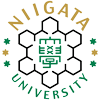The “Research Institute for Natural Hazards and Disaster” conducts collaborative research projects with researchers at other universities and research institutes to further develop natural hazard sciences and natural disaster recovery studies.
Project 1 “Estimation of real-time roof snow load by a numerical snowpack model”
Collaborators: National Research Institute for Earth Science and Disaster Prevention
An estimating system for the distribution of roof snow load on a real-time basis was developed by incorporating a numerical snowpack model “SNOWPACK” by the Snow and Ice Research Center, NIED with “Quasi-Real-Time Snow Depth Monitoring System” by NHDR Niigata University.
Project 2 “Stratification processes of gravels retroacted by the Tsunami event”
Collaborators: Hokkaido Research Organization
This study revealed the difference in the preservation process of gravels between tsunami events and storm wave events at the Holocene coastal bench.
Project 3 “Eruptive processes of the 2014 eruption of Ontake volcano and fluvial transport and sedimentary processes of volcanic materials in the eruption aftermath”
Collaborators: Faculty of Science, Shinshu University
The 2014 eruption of the Ontake volcano and subsequent tragic events presented the difficulties of predicting a small-scale but frequent phreatic eruption. This study revealed the characteristics of lahars and fluvial transport and sedimentary processes of volcanic materials in the eruption aftermath, and the characteristic of deposits, magnetic petrological property, and geochemistry that help in reconstructing a phreatic eruptive history in geological records.
Project 4 “Risk assessment of landslide-dam collapse focused on formation and failure mechanisms”
Collaborators: Toyama Prefectural University
To research more reliable parameters for the stability analysis of landside dams to prevent disasters by the dam collapse, multiple channel surface wave techniques and microtremor array measurements were used to survey the S-wave velocity profile at the Higashi-Takezawa landslide dam in the Niigata Prefecture. The results showed that the combined use of these methods is an effective method for the analysis of the S-wave velocity structure of the landslide dam.
Project 5 “Development of forecasting method of hydraulic status employing assimilation technology with measured values in actual rivers”
Collaborators: Kochi National College of Technology and Public Works Research Institute
Heavy rains occur more frequently. Early evacuation before natural disaster events related to these heavy rains is important to minimize the damage of human lives. We are developing methods to forecast the hydraulic status of rivers by employing assimilation technology with measured values in actual rivers.

